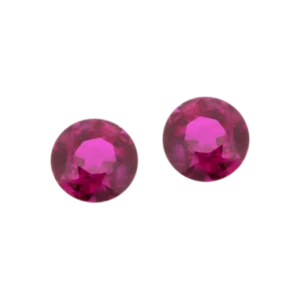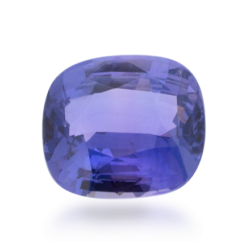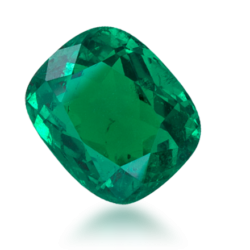Ruby
The ruby is a gemstone recognizable by its red color that characterizes it so much. Close to sapphire and diamond for its quality, the ruby has its own particularities. In the jewelry industry, it is not uncommon to find ruby earrings, necklaces, pendants, bracelets or rings. This precious stone is very coveted in Switzerland and in France as well as in the whole world for all the properties it offers. BenGems, Swiss jeweler, gives you all the secrets of ruby.
The ruby is one of the four precious stones next to the diamond, the sapphire and the emerald. All these precious gems are highly prized by the world’s leading jewelry houses and jewelers. From rings to earrings, the red color of ruby has seduced many people. A trend that is not ready to stop.
Ruby : General data / characteristics
Ruby belongs to the mineral corundum family in the same way as sapphire. Its name comes from the Latin rubeus which means red and echoes its color.
Indeed, the ruby is a recognizable gem by its blood red color.
Ruby red, an emblematic color
It should be noted that the value of this gemstone is assessed from its color and intensity. While all gemologists and jewelers agree that the ruby is a red colored gem, that does not mean that all rubies are the same. It is quite the contrary since the red color varies from one stone to another. Therefore, you can find jewelry in red-pink or red-brown rubies.
As with diamonds, sapphires and emeralds, some colors are more sought after than others. For example, the so-called “pigeon’s blood” ruby is one of the rarest stones with colored diamonds. To recognize it, do know that the “pigeon’s blood” ruby has a very intense red with a hint of fuchsia.
In general, the color of the ruby is broken down into several elements: the primary, secondary and tertiary color.

How hard is the ruby?
Ruby is one of the precious stones with extreme hardness. The Mohs scale, invented in 1812 to measure the hardness of minerals, estimates the ruby to be 9/10. A score that places it among the hardest minerals on earth.
Nevertheless, the ruby does not exceed the hardness of the diamond and the moissanite. Because ruby has a high hardness, it is often added to everyday jewelry: rings, earrings and necklaces. Its robustness allows it to establish its reputation as a solid gem.
How to measure the carat of the ruby?
In jewelry and fine jewelry, the term carat often comes up in conversation. For people who are wondering about its definition, the unit of mass of gems is used by jewelers. Jewelers define the carat as the purity of the precious metal.
The carat was defined in the twentieth century to define a framework for measuring the weight of precious stones. Note that one carat is equivalent to 0.20 grams. There is no general weight for the ruby, it all depends on its location. For example, the largest known ruby is called Raja Ratna and weighs over 2,475 carats, which is almost 500 grams.
How pure is the ruby?
The purity of rubies is not the same as that of diamonds. Unlike diamonds, rubies do not have such demanding regulations. This difference is partly explained by the fact that natural ruby is very rare.
It is due to the fact that the natural mineral often has inclusions that can tarnish the quality and beauty of the ruby. Jewelry designers therefore mainly turn to synthetic or artificial rubies. These offer high quality features such as ideal transparency and a very low number of inclusions.
What are the origins of ruby?
To know the history of the ruby, you have to go back several centuries before our era. The ore was mined in India and in the Sri Lanka region. In Antiquity / ancient times, and the Middle Ages, wearing ruby jewelry was the epitome of nobility. The representatives of the clergy did not hesitate to decorate their religious accessories, books and clothing with rubies to highlight their great wealth.
With the development of trade in recent centuries, natural mineral deposits have evolved. Today, nearly 90% of rubies come from Burma, but the production of this country is experiencing some difficulties. Indeed, the main deposits of Burma have been exploited and it is difficult to find new ones.
One of the solutions to continue working with ruby in jewelry is to rely on new producing countries and new deposits. This is the case of Mozambique, Thailand and Madagascar. The deposits on the island of Madagascar are a recent discovery since the ruby was discovered in the 90s on Malagasy territory. Finally, ruby miners have recently had their eyes set on Greenland, as this country is home to ruby deposits that are accessible from melting ice.
How to tell the difference between a natural ruby and an artificial ruby?
The confusion between ruby, sapphire and spinel is often made. If you have a gemstone or a mineral and want to know its name, BenGems offers you complete expertise. Benjamin Mizrahi, renowned gemologist on the Geneva scene, welcomes you to his Swiss workshop to carry out an expertise of your gem. This expertise certifies or not the authenticity of your stone.
How does a complete expertise take place at BenGems? After analyzing the gemstone, Benjamin Mizrahi will reveal the biggest secrets of your stone: name, size, quality, carats and other specific characteristics. If you have a ruby, our gemologist will be able to tell you if it is a natural or artificial ruby. He can also accompany you in the creation of a jewel from your stone according to your desires.
How is ruby used in jewelry making?
Due to its high hardness, ruby is a precious stone ideally suited to the creation of jewelry. Whether for a pair of earrings, an adornment or to complete a jewelry collection, ruby guarantees a dazzling and elegant result.
Choosing a ruby means choosing a high-quality gemstone. There are many occasions to wear ruby jewelry: engagement, baptism, birthday, birth, charity gala and even at home.
How much does a ruby cost?
The price of the ruby depends on many elements. It is therefore difficult to define a general price since all rubies offer very different characteristics. However, remember that several factors influence the purchase price of this precious stone:
- Color: this is the first element that you must examine if you want to buy a ruby. Rubies with a color approaching very intense bright red generally have much higher purchase prices than rubies with a light red color. Know that Burmese rubies offering blood red colors are highly valued around the world.
- Clarity: if the inclusions are mostly more present on a natural ruby rather than on an artificial ruby, they can affect the final cost. As with other gemstones, a flawless gem visible to the naked eye is rarer and therefore more expensive. However, there are rubies with a star shape caused by inclusions that are prized. If you have in your possession a ruby with a star shape on the surface of the stone, you have a very rare mineral.
- Size: this characteristic should also be taken into consideration. The size of the stone contributes to its value and hexagonal stones are preferred by amateurs. Jewelry designers, on the other hand, prefer to work from oval-shaped rubies to avoid stone loss.
Other characteristics participate in the estimation of the purchase price of the ruby such as its origin. Stones from Burma remain the most popular even if those from Mozambique and Thailand are becoming more and more valuable.
What virtues does the ruby have?
King of precious stones for the Indians, source of joy for the Romans in Antiquity, blood of Christ for the Christian kings of the Middle Ages, the ruby has many symbols. Today, ruby is considered a very energetic stone that brings joy and dynamism. Its flamboyant red refers to passionate love.
For people experiencing inner malaise, choosing ruby jewelry can bring self-confidence and serenity. Like an amulet, the ruby is a protective stone for the wearer.
How to clean /maintain a ruby?
Cleaning the ruby is simple. Simply clean the stone with warm water, dishwashing liquid and a toothbrush. Still be careful and do not rub too hard to avoid leaving traces. Once rinsed, use a towel or cloth. To avoid damaging your ruby jewelry, avoid exposing it to extreme heat and wearing it if you use corrosive or aggressive products.
Rubies are always fashionable gemstones. Put on many jewels, they offer a feminine and refined result. Whether you have as a project the creation of a jewel or want to know more about a ruby you own, do not hesitate to make an appointment with our gemologist. Benjamin Mizrahi will be happy to open the doors of his workshop and answer all your questions.






